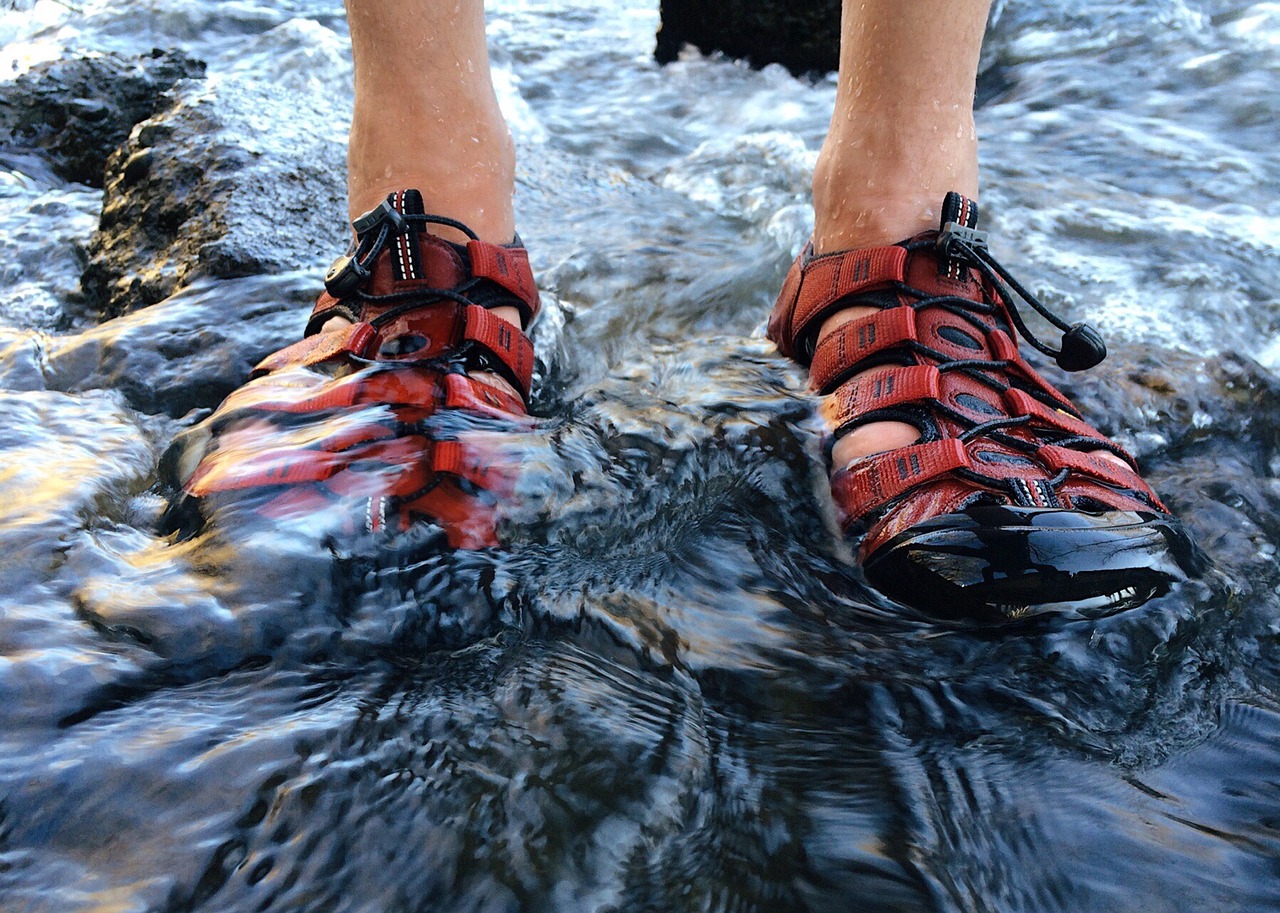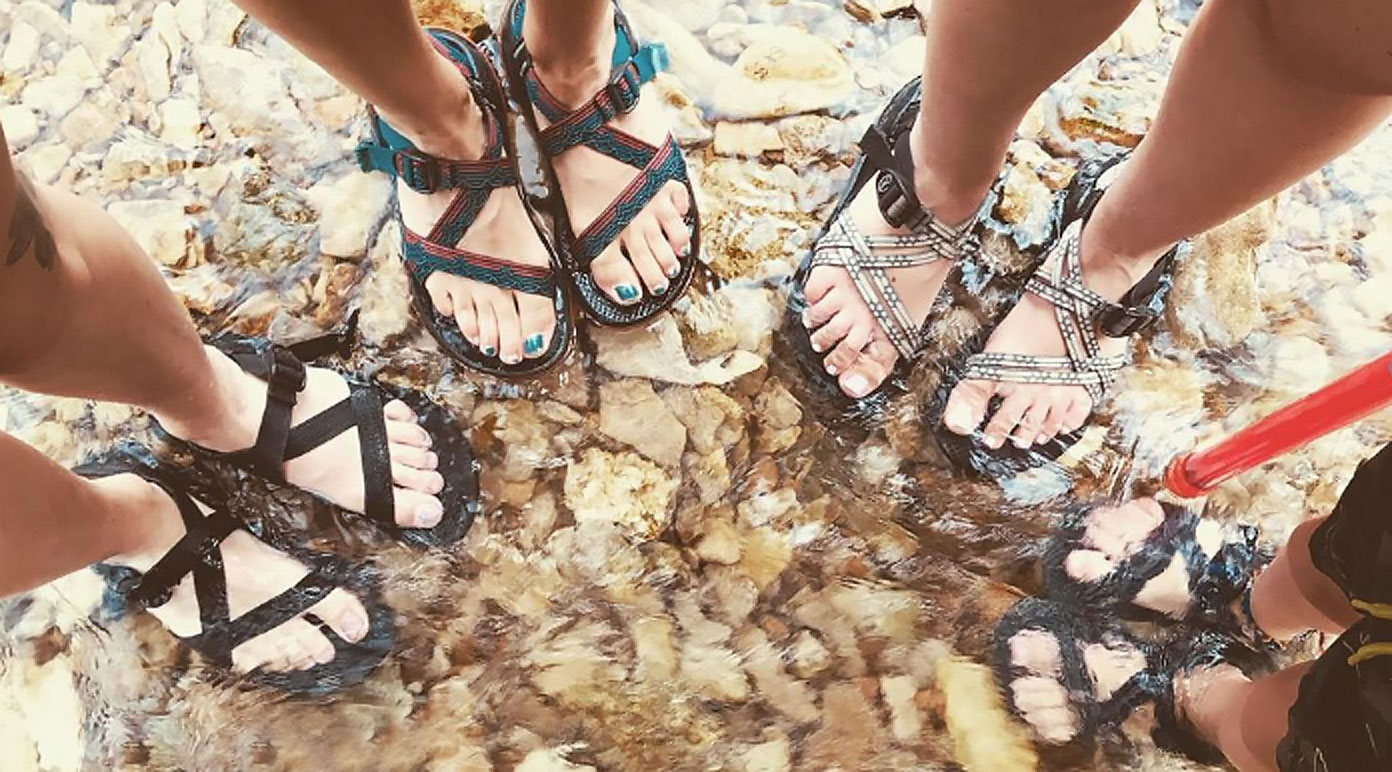There is always a debate about the proper type of footwear for hiking, and while some people are appalled by the idea of hiking in anything else than trail shoes or hiking boots, other prefer the breeziness of hiking sandals. The bottom line is you should find something comfortable and supportive, that is broken in, has good traction and that you are used to wearing. Hiking sandals are perfect for outdoor activities like scrambling, boating, fishing, rowing or exploring the beach.
Best women’s hiking sandals
|
|
|
|
|
|---|---|---|---|---|
| OVERVIEW | An upgraded favorite classic featuring soft heel-strap padding and a new, modern sole with even better traction | An ultra-versatile, quick-drying sandal, with crisscrossed, splash-proof webbing and a wear-everywhere Mush™ topsole. | With the large protective toe box, quick-drying materials, and grippy outsole, this is a favorite for those folks looking for a more protective hiking sandal. | Amazing grip, high arch, no slipping around in the shoe, no blisters – this is the ultimate hiking sandal. |
| BUY NOW | BUY NOW | BUY NOW | MORE FROM CHACOS |
What are the hiking sandals design features you need to consider?
Hiking sandals features and construction
Outdoor sandals are very different than traditional summer sandals. They are made from very durable synthetic materials or thick leather, which makes them puncture-resistant and capable of walking over sharp terrain.
Upper
There are two main types of sandals: those with an upper made up of straps or those featuring an upper with large holes in it through which you can see the foot. Uppers for hiking sandals are typically made of either suede/nubuck, leather or synthetic materials and each have their advantages. Suede is a type of leather that is thinner and softer than full-grain leather and typically lasts longer than synthetic materials, but it does not dry as quickly. Synthetic straps can be made of polyester, nylon, or microfiber and tend to be lighter and dry quicker.
Sole construction and lug pattern
Midsole
Midsole is the part of the sole that connect the part that comes in contact with the foot, and the outsole, and provides support. It is made either of EVA or PU.
EVA tends to be lighter and softer, offer better cushioning, but are less durable. For light summer hiking EVAs would do just fine. But for hiking long distances, or over sharp and rugged terrain hiking sandals with PU midsoles are a better option.
Outsoles
Outsole is the bottommost layer of a sandal, which actually makes the contact to the ground as you hike. Made of rubber, it is also called lug sole and includes indentations or grooves to provide grip. The lug pattern and depth on the outsole depends on your preference and the amount of traction you need.

Insole and footbed
The footbed should ideally be padded or cushioned, either with an air based midsole such as EVA, Compression molded EVA, Vibram or similar. This can protect you from impacts and shocks, and provides lateral stability. Rubber footbeds prevent feet from slipping and sliding inside the sandal.
If you have high arch it is nice to have some support, so you need to look for a contoured and arch supportive footbed designed for a higher arch. But if you arch is lower, or your feet are a bit pronated, you will find the feeling of the sole digging into your feet uncomfortable, so look for padded and contoured insole that will mold to your feet
How Should Hiking Sandals Fit?
The most important thing when you are choosing footwear for the trail is to make sure that whatever you have on your feet is comfortable. When choosing a pair of hiking sandals to go a long way, these are the things to take into account:
Sole
When it comes to hiking, you need shoes that have a sturdy sole that provides your feet with a firm grip. If you walk over rough terrain or trails that have an incline, you can’t afford to slip and fall. Look for hiking sandals that have a sturdy sole that also flexes with your natural foot movement. Additionally, you should also check to make sure the sandals have an appropriate amount of tread, but this of course depends on a type of the trail you’ll be hiking on.
Sizing
Your sandals should be a size or half size bigger than your normal shoe. The reasoning behind this is solely due to the fact your heels and toes are exposed versus being fitted into a closed shoe. This allows feet to extend fully, so it’s always better to have a little extra wiggle room than to have your toes pouring over your shoes.
Velcro straps, laces, webbing
Having multiple adjustable straps on your sandals will allow you to change the fit of the sandal and relieve pressure on the parts of your feet that are feeling sore or swollen.
Perhaps the most convenient option is bungee laces with a cinch cord because they allow you to easily adjust the fit. On the other hand, Velcro straps are number one when it comes to quickly get your foot in and out.
It’s also a good idea to make sure that your sandals offer you the right amount of ankle support, too. Try a pair that have a strap that goes behind your heel as well as straps that fit around the side and connect to the sole of the shoe for a secure fit.
Closed toes or open toes?

Sandals with toe cap offer much more protection, but they are not as breathable, and you will have to take them off and give them a shake if rocks happened to get in through the holes. With open toes you can just shake them out and keep going.
Hiking sandals for women
There are some significant differences between the feet of men and women. Women tend to have a wider forefoot and narrower heel compared to men, so they may find it difficult to find the right pair of sandals among models designed mostly for men. We recommend that women only buy the women’s models, as these have been specially designed to fit the female anatomy, with narrower footbed and design geared towards smaller feet.
Sandals for hiking – Pros and Cons
Pros
- Fewer blisters. Sandals have fewer points of contact with your feet, reducing rubbing and preventing your feet from getting sweaty and sticky, thus preventing chafing and blisters.
- Crossing the water. Sandals can be fully submerged in water without compromising their integrity or making the rest of your hiking miserable. Simply walk through whatever water you’ve come across, get to the other side, and keep walking – the air and your movement will have your feet dry in no time.
- Better for hot temperatures. Hiking boots and trail runners can trap hot air and moisture around your feet, causing excessive sweating and possible health side effects. Sandals allow your feet to breathe and keep them dry, preventing the growth of bacteria.
Cons
- Your feet are exposed to everything. This includes, brush, rock or even snake bites.
- Not for rugged terrain or tender feet. A hiking sandal, no matter how good it is will never match the sturdiness and protection of a hiking boot.
- Lack of ankle support. Ankle support is important when you are traversing a challenging trail, or hauling heavy loads.
- Not ideal for hiking in wet weather. Even though the sandals dry super quickly after crossing streams, they are not that good for hiking in the rain or on muddy terrain.
Barefoot running sandals: What are those?!

The barefoot running is the new philosophy behind the moving around on your two feet that has become very popular in the last few years. These minimalist sandals completely disregard various types of support that traditional shoes offer and allow you to be more grounded and rely completely on your feet for support.
Barefoot sandals and shoed have no padding, no raised heel and ultra-thin sole. They allow you to experience the ground you are walking on, as you would if you walked barefoot, providing just a thin layer of protection. They are super flexible, super lightweight, but the truth is – they are not for everyone. If you have any kind of foot or ankle problem, it would be better to consult a licensed podiatrist before throwing away your shoes.
Can you backpack in sandals?
Provided that the weather is right and the terrain allows it, the answer is yes. As you have seen, there are many benefits of backpacking in sandals. For an ultra-light, hot weather backpacking trip, sandals are a great choice. However, if you are carrying a heavy load, you might consider wearing something that provides greater support.
Even if you are not hiking in sandals, you can carry a pair with you to put on once you get to camp. It is very nice to get out of your shoes or boots and give your feet a well-deserved break, while still being able to walk around the camp. Some hiking sandals are ultra lightweight and take no room at all, you can even roll them up and throw them in your backpack.
Conclusion
A good hiking sandal definitely has its place in the hiking footwear assortment. While sandals are not going to be as protective of your feet as hiking shoes or boots, they do have their benefits. For example, if you are going to be going through an area that has a lot of water crossings, going through water with sandals will let your feet dry quickly. This is much better than having your shoes soaked, or having to stop to take them off and put them on again.


 Teva Hurricane XLT2
Teva Hurricane XLT2 Teva Voya Strappy
Teva Voya Strappy Keen Newport H2
Keen Newport H2 Chacos Z CloudX
Chacos Z CloudX